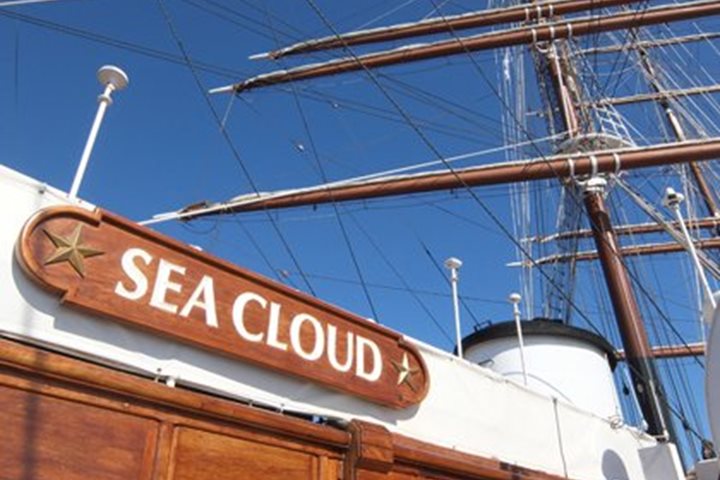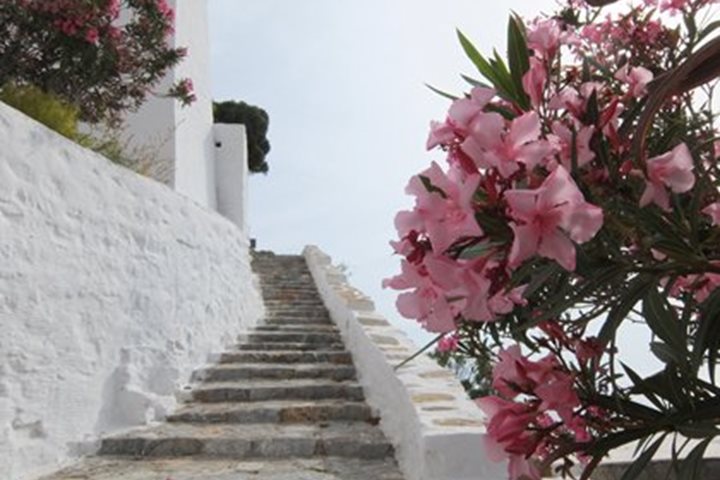After a very full day from Istanbul to Izmir to Ephesus, we all indulged in the comfort and elegance of the extraordinary sailing yacht Sea Cloud. Even though we’d seen so many photos of this majestic vessel, it could not prepare us for the beauty of the woodwork, the polished brass, the detailed furnishings, and the dizzying configurations of sails and lines. She was a beauty, and she was definitely the real thing.
We had a very calm evening rounding the Greek island of Samos positioning ourselves for an anticipated light morning breeze from the north. A colorful sunrise dawned over the Turkish coast, leaving the rains of the previous days behind us. Captain Pushkarev called the deck crew of 18 sailors to “sail stations” at 0900, and many of us joined the expedition leader on the spanker deck for a “play-by-play” of the sail maneuvers.
The deck crew is made up of three mast teams of six sailors each, who begin by going aloft into the rigging to prepare the sails for setting. The bosun—who is the quarterback of the deck crew—then informs the captain that they are ready to set sails, and the command for, “Sails in order!” quickly follows. Suddenly sheets are hauled, yards are raised, canvas unfurls as if by magic, and there is action everywhere. The expedition leader first explained the mechanics of the square sails, and then we moved forward for the setting of the jibs and staysails. It was a thing of beauty.
Alas, true sailors are only too familiar with the fickle nature of the winds, and no sooner had we set the sails than the winds almost completely died. The point of a square-rigger is not to set all sails, as some of them cancel out the function of others, but in light winds you set a lot of sail to try to capture every breath. We had 23 sails set and we were moving at a barely noticeable 1.5 knots. Still, our expedition leader explained, square riggers were by far the most efficient way to carry cargo until the development of engines and paved roads, as a pair of oxen could only carry a ton of cargo at a rate of two miles per hour for six hours before resting. A ship could carry 1000 tons of cargo 24 hours a day, averaging much higher speeds, which put things into perspective in our modern fast-paced hustle and bustle world.
With dying winds, we took the sails in before lunch and anchored for our afternoon visit to the stunning Temple of Apollo at Didyma. Little-known today and quite off the beaten track, this temple was the eastern oracle of the Classical Greek world, complementing its western counterpart at Delphi. The columns, walls and stairs were gigantic, and we all wondered how this magnificent building that served as a religious center for 800 years and rivaled the Temple of Artemis at Ephesus could not be better known. It was spectacular in the late afternoon light.
We finished the day at anchor with Captain Pushkarev introducing the ship’s officers, and all of us delighting in our master chef Thomas Pape's gala welcome dinner.









